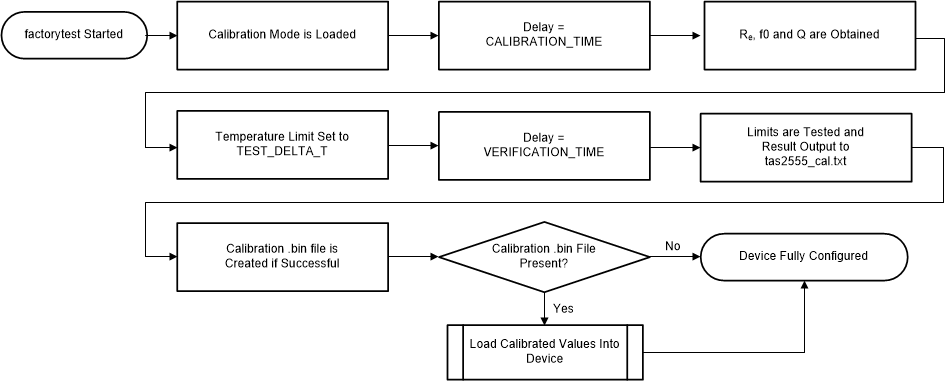SLAA954 August 2020 – MONTH TAS2563
2 Factory Test and Calibration (FTC)
Speaker parameters can vary from the vendor datasheet with a tolerance, and each speaker may vary from each other as well. This can lead to inaccurate speaker protection when one speaker model is used to fit all speakers. For this reason TI’s Smart Amp algorithms can be calibrated accordingly to each speaker variance to ensure proper and accurate function of speaker protection. The FTC is performed to calibrate the Smart Amp algorithm and protect the speaker from parameter variations. The FTC obtains the speaker Re, f0, Q, and voice coil temperature as seen below in step three of FTC Process shown below.
 Figure 2-1 Factory Test Calibration
Process.
Figure 2-1 Factory Test Calibration
Process.